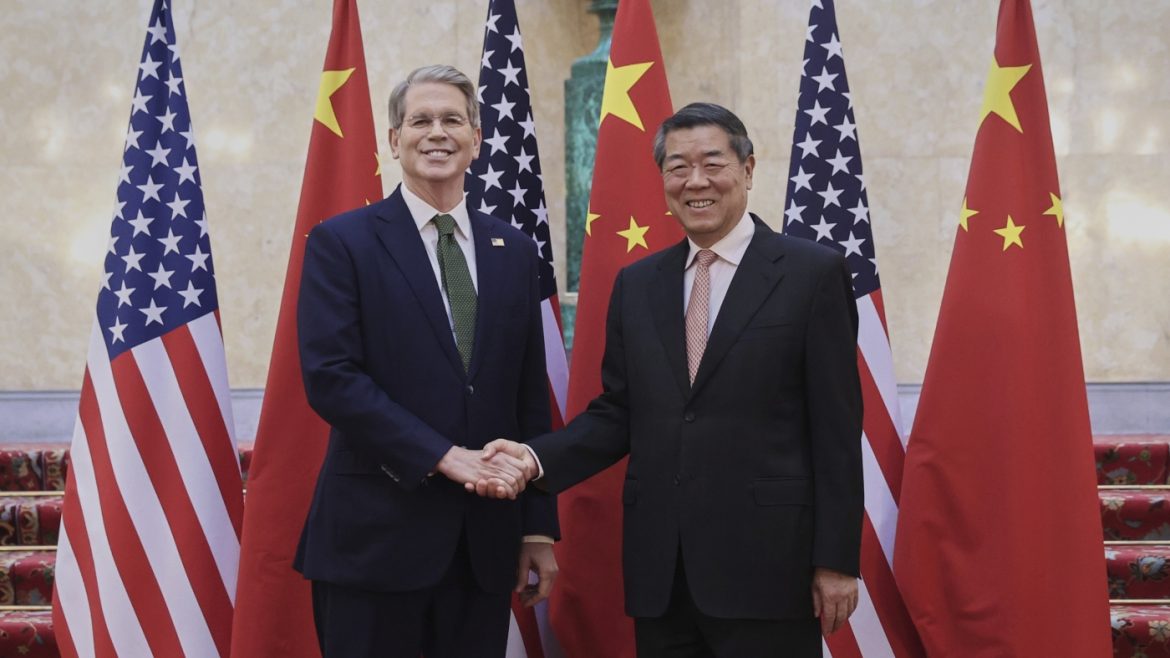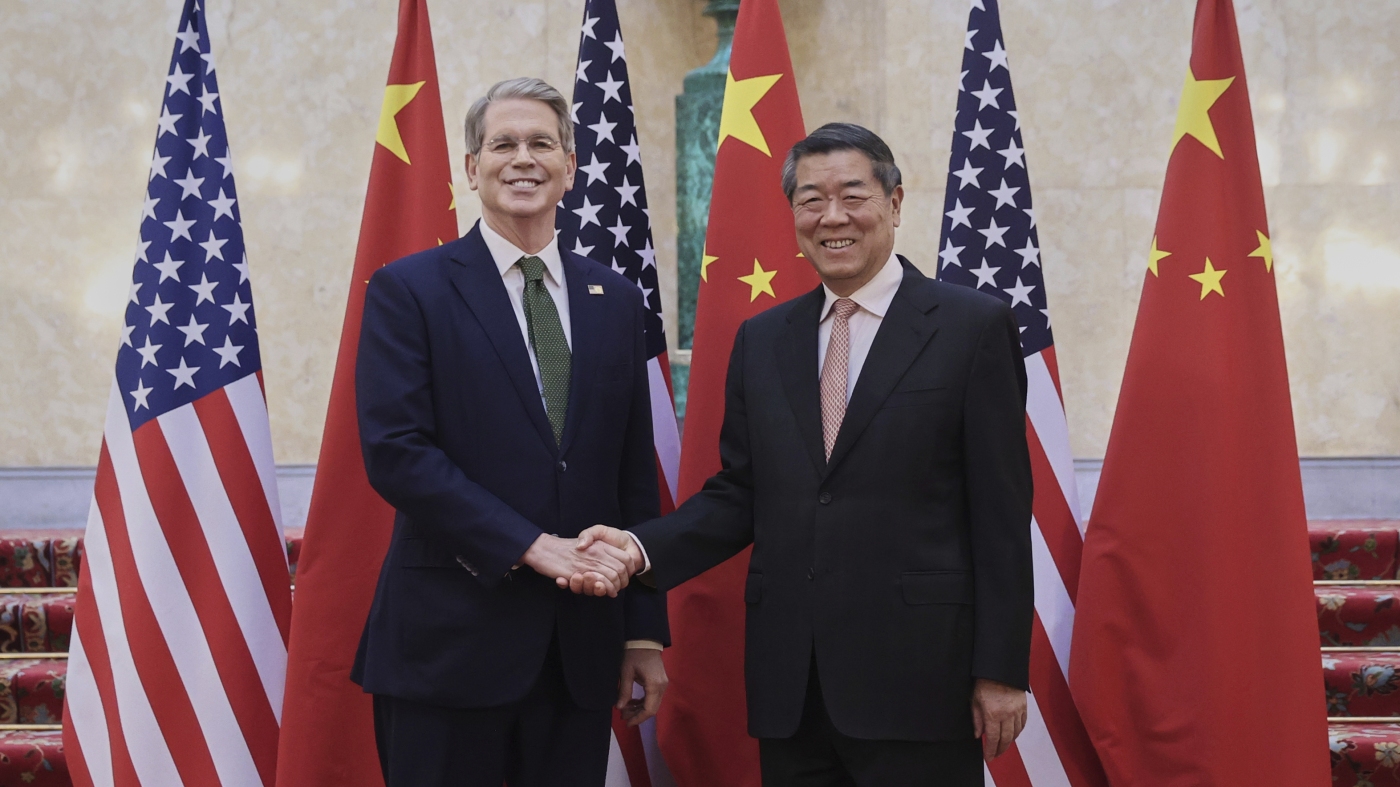A Tentative Trade Truce: US and China Agree on a Framework
After a prolonged period of trade tensions, the United States and China have reportedly agreed on a framework to resolve their trade disputes. This development, emerging after talks in London, represents a potential step toward de-escalation in the economic relationship between the world’s two largest economies. While details remain scant and final sign-off is pending presidential approval from both sides, the agreement signals a willingness to find common ground, building upon previous discussions and agreements reached earlier in Geneva.
The Genesis of the Framework: Echoes of Geneva
The current framework is rooted in the consensus achieved during talks held in Geneva in May. These earlier negotiations, along with a call between the two presidents, laid the groundwork for the recent discussions in London. Li Chenggang, China’s vice minister of commerce and international trade representative, confirmed the agreement “in principle” and noted that the framework aims to implement the understanding reached between the two leaders. This suggests that the framework is not a completely new initiative, but rather a structured plan to operationalize existing agreements. The impetus for these talks stems from a desire to ease economic tensions that have escalated over time, impacting both nations and the global economy. Prior attempts to resolve trade differences have included the Economic Working Group, established in 2023, highlighting the ongoing effort to find common ground.
Howard Lutnick’s Optimism and Presidential Approval
US Commerce Secretary Howard Lutnick’s statement added further weight to the announcement, indicating that the framework awaits approval from the respective heads of state. His optimistic tone suggests a belief that the agreement addresses key issues and has the potential to lead to a more stable trade relationship. The need for presidential approval underscores the significance of the framework and the level of political commitment required to implement it. It also introduces an element of uncertainty, as the final decision rests with the leaders of both countries, who may have their own strategic considerations.
Key Issues on the Table: Rare Earths and Tariffs
Several reports indicate that the framework addresses critical issues such as rare earth minerals and retaliatory tariffs. Rare earth minerals, crucial components in various technological applications, have been a point of contention, with concerns over China’s export policies. Resolving this issue would be a significant win for the US, ensuring access to essential resources. The framework also seemingly aims to revive a trade truce, potentially involving the reduction or removal of retaliatory tariffs imposed by both sides. While specific details are scarce, the mention of tariff reductions suggests a willingness to ease the burden on businesses and consumers. One report suggests a potential temporary reduction of tariffs on Chinese goods, indicating a phased approach to de-escalation.
Potential Benefits and Economic Impact
If implemented, the trade framework could have several positive effects. A stable trade environment would reduce uncertainty for businesses, encouraging investment and growth. Resolving the rare earth minerals issue would secure supply chains for critical industries. Reduced tariffs would lower costs for consumers and businesses, boosting economic activity. Furthermore, a de-escalation of trade tensions could improve the overall relationship between the US and China, fostering cooperation on other global challenges. The agreement is a “boon to an economy and markets that have struggled,” according to Axios.
Lingering Questions and Future Challenges
While the agreement on a framework is a positive step, numerous questions remain unanswered. The specific details of the framework, including the exact terms of tariff reductions and commitments on rare earth exports, are yet to be revealed. The success of the framework hinges on its effective implementation. Both sides must adhere to the agreed-upon terms and address any disputes that arise in a constructive manner. Moreover, the underlying issues that led to the trade war, such as concerns over intellectual property protection, market access, and trade imbalances, still need to be addressed in the long term.
A Realistic Vision for Coexistence
The Carnegie Endowment for International Peace emphasizes the need for a “realistic vision” for US-China relations. The trade framework could represent a step in that direction, fostering a more stable and predictable economic relationship. However, it is crucial to recognize that the US and China have different strategic interests and values. A sustainable relationship requires managing these differences and finding areas of common ground where cooperation is possible. Policy experts need to develop such a vision to avoid the turbulent waters of the past.
The Road Ahead: Cautious Optimism
The agreement between the US and China on a trade framework is a welcome development, offering a glimmer of hope for a more stable economic relationship. However, it is essential to approach this news with cautious optimism, as the true test lies in the details and implementation of the framework. The pending approval from Presidents Trump and Xi adds an element of uncertainty, and the underlying issues that fueled the trade war still need to be addressed. The future of US-China trade relations depends on the willingness of both sides to engage in constructive dialogue, compromise, and uphold their commitments.
A Step Towards Calmer Waters?
The agreement on a trade framework raises the possibility of calmer waters in the turbulent sea of US-China relations. But whether this tentative truce blossoms into a lasting peace depends on the actions of both nations. This framework is not the destination, but rather a potential starting point on the long and winding road toward a more stable and mutually beneficial relationship.


